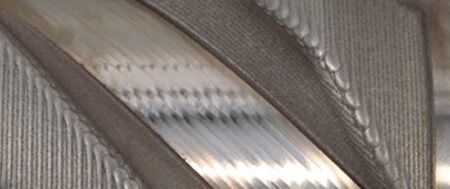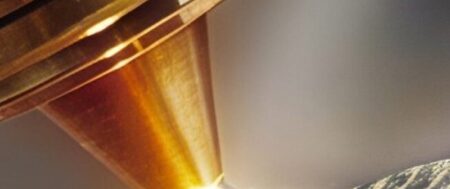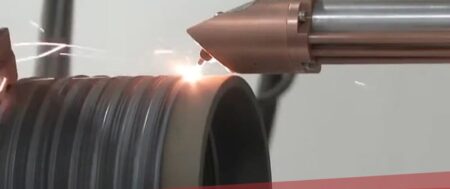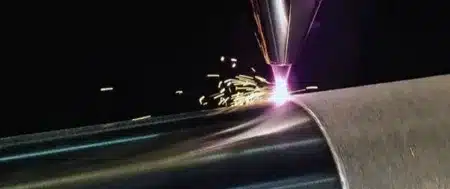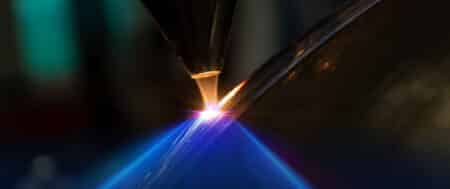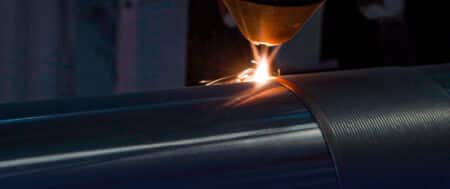In the world of industrial manufacturing, metal cladding has long been a cornerstone for improving the durability, corrosion resistance, and overall performance of critical components. However, traditional metal cladding methods come with a host of challenges that can compromise the quality and efficiency of production processes. Enter fiber laser cladding—a technology that is transforming the metal cladding industry by addressing these challenges head-on. In this blog, we will explore the top 10 issues of traditional metal cladding and how fiber laser cladding offers innovative solutions to each.
1. Inconsistent Coating Quality
Traditional metal cladding processes, such as arc welding or thermal spraying, often result in uneven coating thickness and inconsistent material distribution. This inconsistency can lead to weak points in the coating, reducing the component’s lifespan and performance.
Solution: Fiber laser cladding offers precise control over the deposition process, ensuring a uniform and consistent coating thickness. The laser’s ability to deliver concentrated energy to a specific area allows for precise melting and solidification, resulting in a more homogeneous coating with fewer defects.
2. High Heat Input Leading to Distortion
One of the major drawbacks of traditional cladding techniques is the excessive heat input, which can cause thermal distortion and residual stresses in the base material. This can compromise the mechanical properties of the component and lead to dimensional inaccuracies.
Solution: Fiber laser cladding significantly reduces heat input due to its high energy density and focused laser beam. This minimizes thermal distortion and reduces the heat-affected zone (HAZ), preserving the integrity of the base material and maintaining its original dimensions.
3. Limited Material Compatibility
Traditional cladding methods often struggle with bonding dissimilar materials, leading to poor adhesion or metallurgical incompatibilities. This limits the range of materials that can be effectively clad together.
Solution: Fiber laser cladding excels in bonding dissimilar materials due to its precise energy control and rapid solidification rates. The process allows for the creation of strong metallurgical bonds between different materials, expanding the range of compatible cladding materials and enabling the development of advanced, multi-material components.
4. Porosity and Cracking Issues
Porosity and cracking are common defects in traditional cladding methods, particularly in processes like plasma spraying or arc welding. These defects can weaken the cladding and lead to premature failure in service.
Solution: The controlled environment and precise parameters of fiber laser cladding significantly reduce the risk of porosity and cracking. The process allows for smooth, defect-free coatings that enhance the mechanical properties of the component and extend its service life.
5. Complex Geometries Are Challenging
Traditional cladding techniques often struggle with coating complex geometries, such as internal surfaces, sharp edges, or intricate patterns. This can result in uneven coatings or the need for additional machining, increasing production costs and time.
Solution: Fiber laser cladding’s versatility allows it to coat complex geometries with ease. The laser can be precisely directed to target specific areas, enabling uniform coverage even on challenging surfaces. This capability reduces the need for post-processing and enhances the overall efficiency of the production process.
6. Environmental and Safety Concerns
Traditional metal cladding processes, particularly those involving chemicals or high-temperature operations, can pose significant environmental and safety risks. These include the release of harmful emissions, toxic fumes, and hazardous waste.
Solution: Fiber laser cladding is a cleaner, safer alternative to traditional methods. It generates minimal emissions and waste, and the process is highly controlled, reducing the risk of accidents and exposure to hazardous materials. This makes it a more environmentally friendly and sustainable option for modern manufacturing.
7. Inefficient Material Usage
Many traditional cladding methods result in significant material waste, as excess material is often deposited and must be removed through machining. This not only wastes valuable materials but also increases production costs.
Solution: Fiber laser cladding offers precise control over material deposition, minimizing waste. The process deposits only the required amount of material, reducing the need for post-process machining and optimizing material usage. This efficiency translates into cost savings and reduced environmental impact.
8. High Energy Consumption
The energy-intensive nature of traditional metal cladding methods can lead to high operational costs and a significant carbon footprint. Processes like arc welding or thermal spraying require large amounts of energy to achieve the desired results.
Solution: Fiber laser cladding is more energy-efficient due to its targeted energy application and high processing speeds. The focused laser beam reduces the overall energy required for the cladding process, lowering operational costs and contributing to more sustainable manufacturing practices.
9. Long Processing Times
Traditional cladding methods can be time-consuming, especially when dealing with large surfaces or thick coatings. This can lead to longer lead times and reduced production throughput.
Solution: Fiber laser cladding offers faster processing speeds compared to traditional methods. The high energy density of the laser allows for rapid melting and solidification, reducing the overall cladding time. This increased efficiency enables manufacturers to meet tight production schedules and improve their overall productivity.
10. High Operational and Maintenance Costs
The complexity and inefficiencies of traditional metal cladding methods often result in high operational and maintenance costs. Equipment wear and tear, frequent repairs, and the need for skilled operators can drive up expenses.
Solution: Fiber laser cladding systems are designed for durability and ease of maintenance. The precision and control offered by fiber lasers reduce the likelihood of equipment damage and extend the life of the cladding system. Additionally, the automation potential of fiber laser systems can reduce the need for highly skilled operators, further lowering operational costs.
Conclusion
Fiber laser cladding represents a significant advancement in metal cladding technology, offering solutions to many of the pain points associated with traditional methods. By providing consistent coating quality, reducing heat input, enhancing material compatibility, and improving overall process efficiency, fiber laser cladding is helping manufacturers overcome the challenges of metal cladding and achieve higher levels of performance and productivity.
As industries continue to demand higher quality and more efficient production processes, fiber laser cladding is poised to become the preferred method for metal cladding applications. Whether you’re looking to improve the durability of critical components, reduce production costs, or minimize environmental impact, fiber laser cladding offers a powerful solution to meet your needs.
